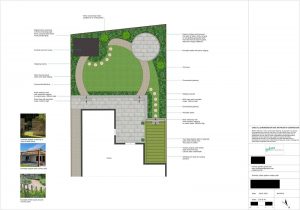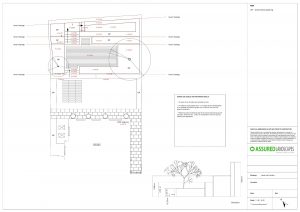How To Price A Landscaping Job
Knowing how to price a landscaping job is key to sustainable business. Here’s how I work out a quote.
The very best advice my Dad ever gave to me, was to always be fair with pricing. Which means don’t rip off your customers, but just as importantly, be sure to charge enough to cover your costs, make a good living AND continue to maintain the business.
Now I know that Holland Landscapes are not the cheapest landscapers in Essex. Neither are we the most expensive. But, the Company has been successfully building gardens and providing jobs for local people for over 30 years so we must have got something right. The business has been passed from Father to Son and I hope to pass it to my own children if they choose to follow in my footsteps.
How DO I price a landscaping job so that its a fair price for all?
In its simplest form, pricing a job is a matter of working out the materials needed, waste removal costs, figuring out machinery hire and labour costs, adding them all together and then adding a profit margin. Sounds easy doesn’t it. But that formula won’t necessarily result in your business making enough money for future growth.
Why? Because it’s easy to forget about hidden costs. The things that ultimately affect EVERY job, even though they’re not directly costed to it. I’m talking insurance, machinery purchases, vehicle leasing, office/yard rent, admin staff, accountancy fees, tax, national insurance, interest on loans…the list goes on.
In this article I’m going to explain how I price a landscaping job with all of those hidden costs and potential pitfalls in mind.
1. Make Sure There Is A Decent Design To Price From
This is a garden design website, so of course I’m going to mention how important it is to have good, clear, scale drawings to work from. A hastily drawn sketch in a notebook won’t be helpful when it comes to working out quantities. And of course, if you over-estimate the materials, either your prices will be less competitive, OR, the wastage is going to eat into your profits.
The other advantage of a properly drawn plan is that if you’re new to quoting and not confident with maths, you can easily ask someone else to double check your calculations.
Make sure that your client has agreed the design – if they ask for changes part way through that can really skew your pricing.
All of the designs created by My Garden Design are double checked by myself to make sure that they are a) buildable and b) easy to quote from. Call me if you would like a demonstration of the website, or visit our portfolio pages to see some examples of our work.

A typical design from MGD presented in full colour to help the client visualise their new garden and (below) in a format for the landscaper to quote and build from.

2. Build In A Buffer To Protect Against Price Rises
Ugh! Don’t get me going on the price of landscaping materials right now. I know, that production is still recovering from COVID and that the war in Ukraine is making things difficult. And I understand why prices are changing so rapidly. But some materials account for a large percentage of a landscaping quote. And any price rises can make a big difference to final profit margin.
Here’s the thing. When I price a landscaping job, I may not actually need to order the materials I’ve priced for another 6 months. By then the price could have changed dramatically. I always put a clause in the client’s contract which allows me to change prices if necessary, but I hate actually doing it. So building a buffer into the quoted price can soften that blow a little. You can always pass any savings on to the client – they’ll be sure to give you a good Google review if you do.
3. Estimating The Time Taken For A Job
When I first started learning how to price a landscaping job, this was the thing I struggled with the most. Without the benefit of a crystal ball, knowing how long it would take for x number of people to complete the work was a bit of a challenge. Having worked on the tools myself, I had an idea of how long the elements of a job would take. And luckily I was surrounded by, (and still am!) experienced people who could give me an honest estimate of the hours needed.
When you’re working out labour costs, it’s wise to err on the side of caution. It only takes an unexpected problem on site or a couple of days of bad weather to throw your budget way off course.
If you’re pricing an unusual job and not sure how long it might take, never be afraid to ask someone whose done this kind of work before. In this industry, we’re a friendly bunch. Try joining The Landscaping Community Group on Facebook. It’s a good place to visit if you want lively conversation and a good support network.
4. Calculating Your Overheads
Business overheads are probably the biggest threat to your bottom line than almost anything else. If you get your materials pricing wrong, or underestimate your labour costs, you’ll quickly learn not to do it again. But overheads are sneaky and they can take you by surprise.
Every 6 months or so, I review my business overheads and calculate what I need to charge per hour in order to cover all of my costs.
The following video explains in detail how I calculate my business overheads, how I work out what to charge for labour and ultimately, how I price a landscaping job. I want to future proof my business and in these uncertain times, it’s only by charging a fair price that I can do that.
How Price A Landscaping Job And Make Money
For More Help With Pricing
For help with budgeting, pricing policy and futureproofing your business, I can thoroughty recommend the services of Neville Stein. I’ve been listening to Neville’s advice for several years now and I can honestly say that I’ve earned far more from his consultations than he has. Click here to visit Neville’s website.



